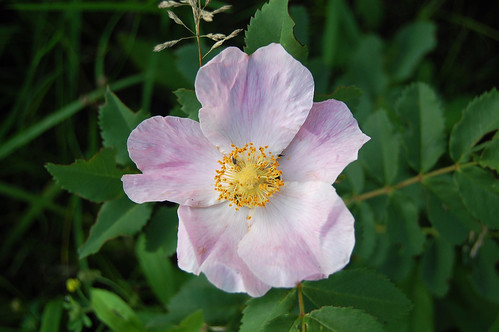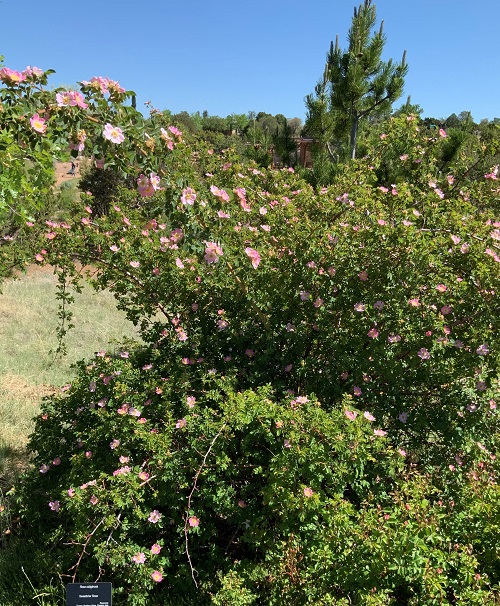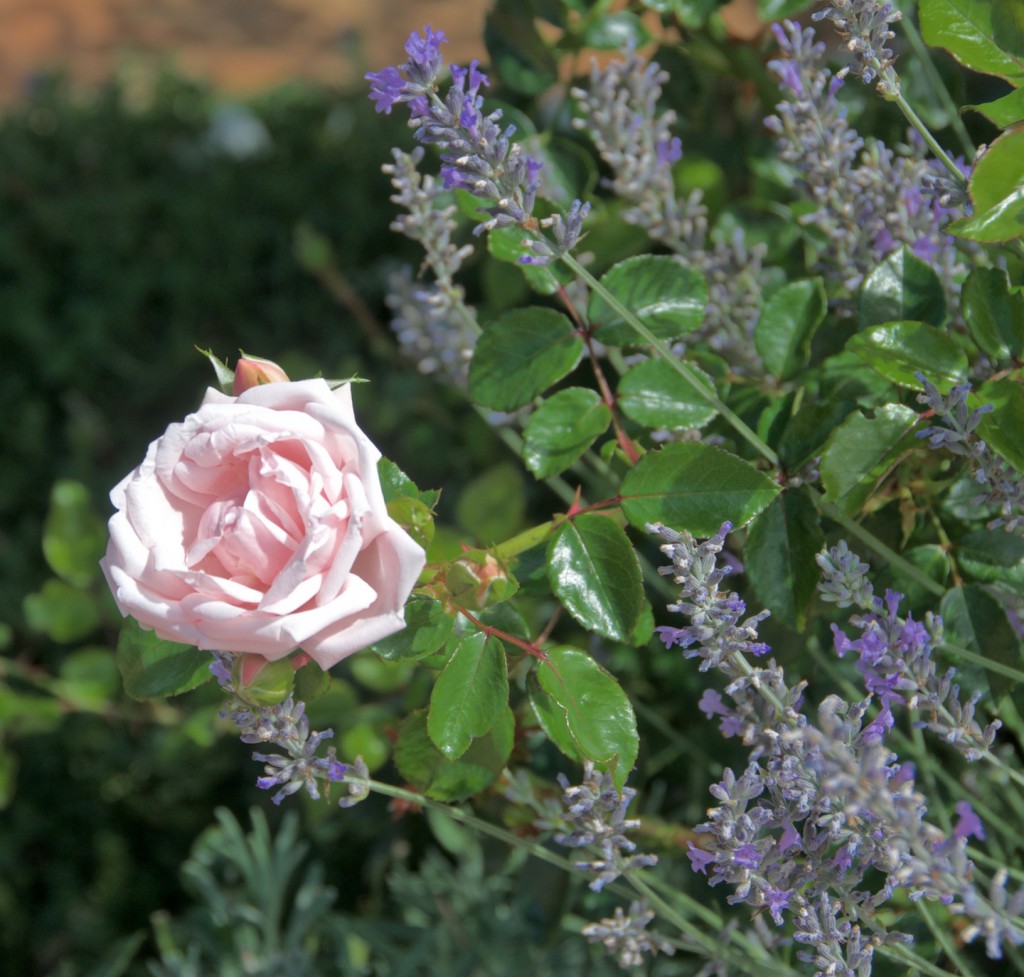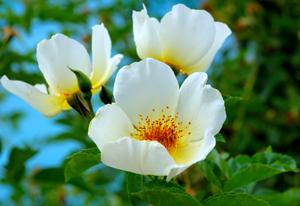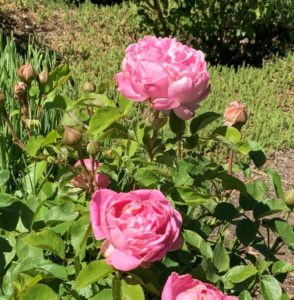Article by Donita L. Frazier, DVM, PhD
Roses – native or naturalized wild roses, old roses (dating prior to the development of hybrid tea roses in 1867), and modern cultivars- grow well in New Mexico. Perhaps you’ve admired them blooming in summer, in filtered light along mountain trails and in canyons, on abandoned homesteads or historic sites, and along irrigation ditches and streams, as well as in urban gardens.
There are five rose species native to New Mexico:
- Rosa stellata has deep pink-purple flowers and grows on dry, rocky slopes and in canyons in the southern part of the state.
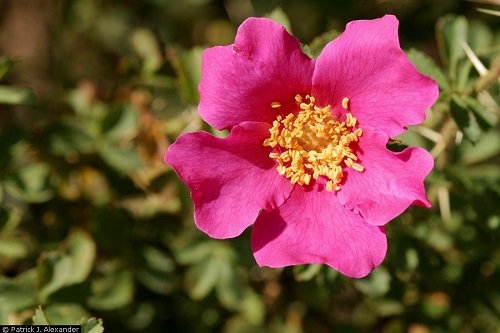
Photo by Patrick J. Alexander, hosted by the USDA-NRCS PLANTS Database
- Rosa acicularis has pink or white flowers, and an extensive native range from wooded hillsides, rocky bluffs, in thickets, and along streams in the northern foothills of our state and as far north as the boreal forest, as well as in northern Europe and Asia.
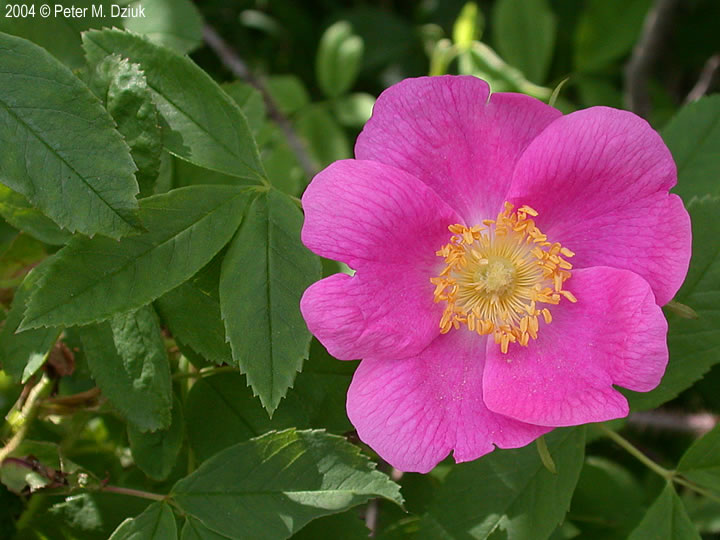
Rosa acicularis by Peter Dziuk (CC BY-NC-ND 3.0 US).
- Rosa arkansana has white or pink flowers and is common in the state’s northeastern prairies and throughout the Great Plains into Canada.
- Rosa nutkana has large pink blooms, and grows at middle elevations in the northern New Mexico mountains, west to California, and north to Alaska.
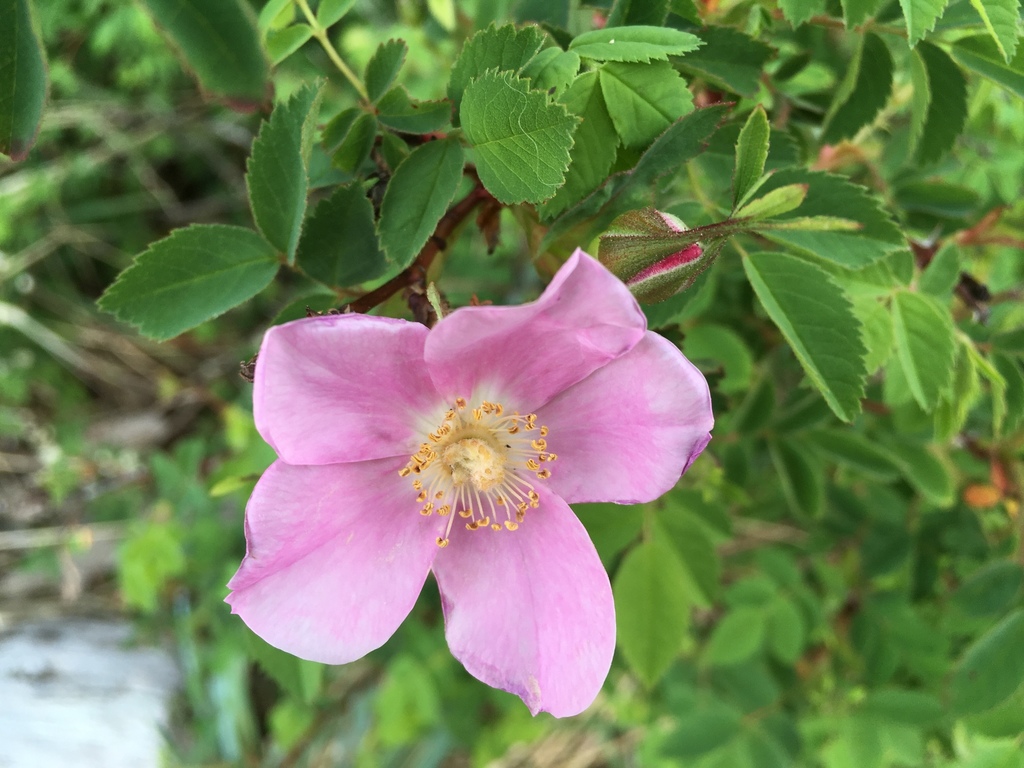
Rosa nutkana (c) sarawick from iNaturalist, some rights reserved (CC BY-NC)
- Rosa woodsii, a variable species with pink blooms that grows throughout the western states, often grows in dense thickets.
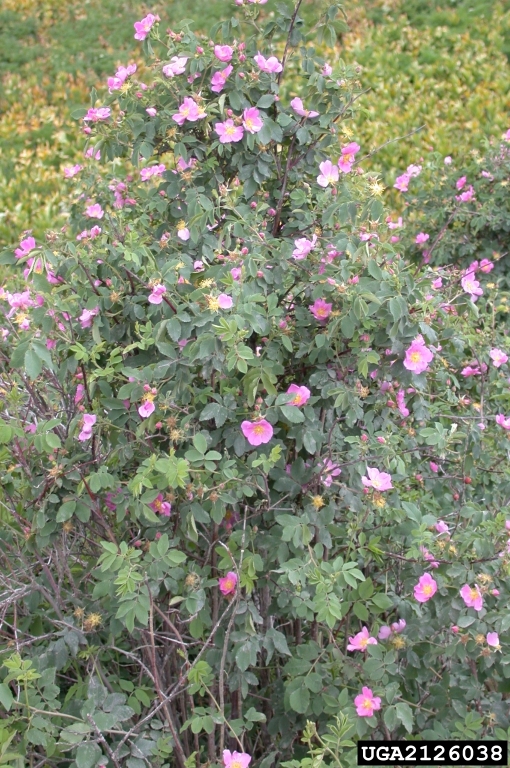
Rosa woodsii by Mary Ellen (Mel) Harte, Bugwood.org
Several exotic species and hybrids have also naturalized in the state, mostly along our waterways.
- Rosa × harisonii, known as the Oregon Trail rose or the Yellow Rose of Texas, a naturally occurring hybrid of the Caucasus rose (R. foetida) and the European rose (R. spinossissima), was found in New York in the early 19th century and transported west by settlers.
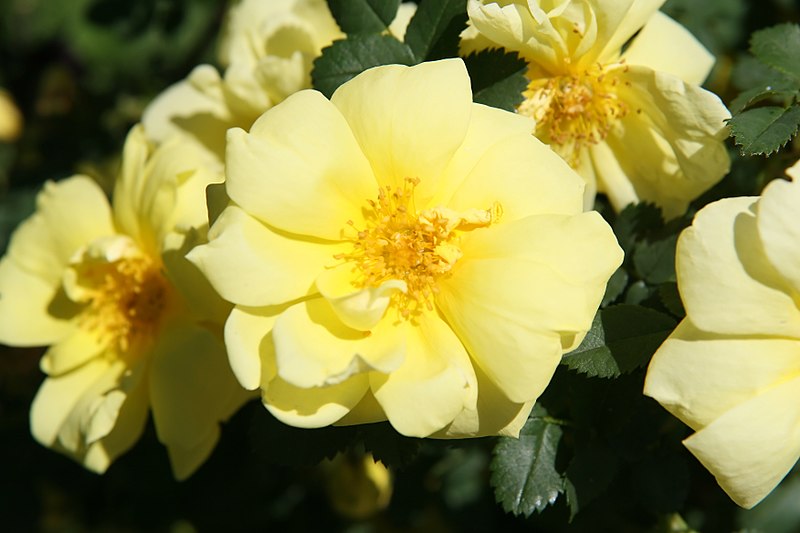
Photo by David J. Stang, taken at the United States National Arboretum, Washington D.C. (CC BY-SA 4.0) Wikimedia Commons.
- Rosa multiflora, a rambling rose with large clusters of white flowers, native to Japan and Korea and introduced into the U. S. in 1886 for use as a rootstock for cultivated roses, has now become invasive in parts of the country.
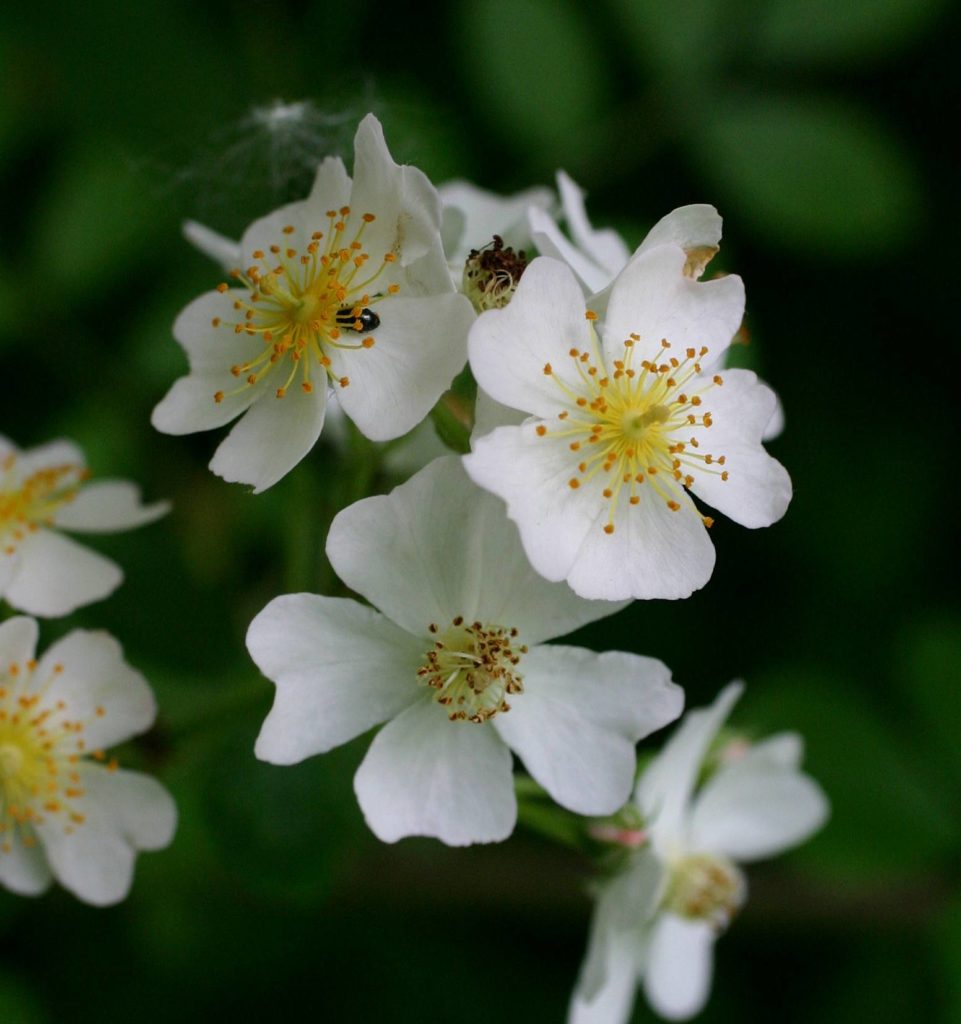
Rosa multiflora by Paul Rothrock (CC BY-SA). SEINet Portal Network. 2020. http//:swbiodiversity.org/seinet/index.php. Accessed on July 29.
- R. obtusifolia and R. canina are European roses introduced to North America for culinary and medicinal use of their large hips.
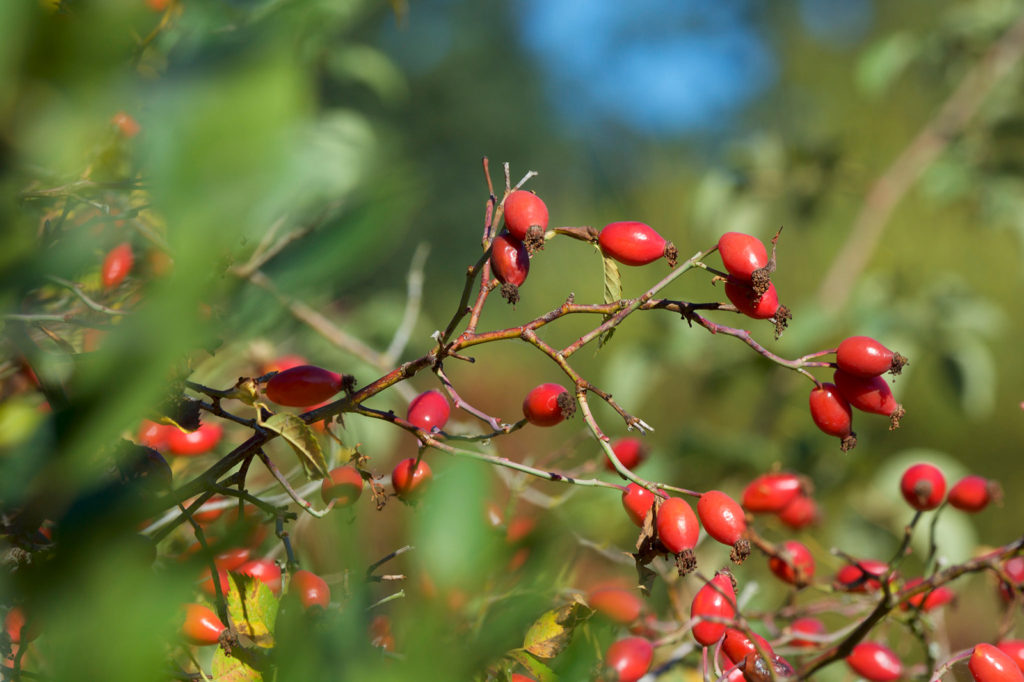
Rosa canina fruits. Photo by Dominic Janus (CC BY-NC-SA 4.0) at UBC Botanical Garden.
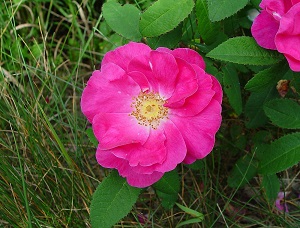
Rosa gallica © Arthur Haines, Native Plant Trust
The Franciscans brought roses to the Southwest and planted them around their missions in the 17th century. The Rosa de Castilla (Rosa gallica) is named in regional documents, literature, poetry, songs, and place-names that date from the 17th through the 20th centuries. This, the Apothecary rose that was grown throughout Europe during the Middle Ages, was most likely the one brought here by the Spanish, but some of the roses listed above, including native roses, were also called by this name.
The sweetbriar or eglantine rose (R. rubiginosa) was known in the American colonies by the 1740s. Like R. gallica, it has large hips that were used medicinally. It was carried west with explorers and settlers, and has naturalized in many places, where people often think it is a native wild rose.
Today, there are over 30,000 varieties of roses, but most of these were not available until the last century. Although roses were cultivated for more than 4,000 years in Asia and at least as early as the Roman Empire in Europe, the importation of perpetual flowering Chinese roses into Europe in the late 1700s and 1800s spurred hybridization, leading to creation of modern roses. All of the roses growing in our Garden, except the sweetbriar rose, are results of these crosses.
Tea roses, or tea-scented roses, originated from a cross between two Asian species (R. chinensis and R. gigantea). The modern tea roses are later crosses between this hybrid and perpetual flowering hybrids of Asian and European species. Most of our rambling roses are derived from R. wichuriana, native to the coastal regions of Japan, Korea and nearby China. A wichuriana hybrid (Rosa ‘Dr. W. Van Fleet’), bred and introduced in 1870 by the physician of the same name, gave rise to a repeat-blooming sport, ‘New Dawn’, in Somerset Rose Nursery in New Jersey in 1930.
There were no deep yellow wild roses in Europe, but repeated crosses with Asian roses gave rise to cultivars such as ‘Golden Wings’ (with genetics of the wild shrub ‘Manchu’ rose, R. xanthina and a shrubby rose native to Europe and northwest Africa, R. spinossissima or pimpinelifolia) by the rose historian Roy Shepherd in 1956.
Other horticulturists crossed the Asian R. multiflora with either a dwarf Chinese species or a small hybrid tea to produce polyanthas. These were further crossed with hybrid teas to produce floribundas. The first ‘Iceberg’ roses were floribundas, bred from a large flowered hybrid tea rose (Virgo, 1947) and a hybrid musk rose (Robin Hood, 1927; musk roses were derived from R. moschata, native to southern Europe and the Middle East) in 1958 by German breeder Reimer Kordes. The climbing ‘Iceberg’ was a sport discovered by Cants of Colchester in England in 1968.
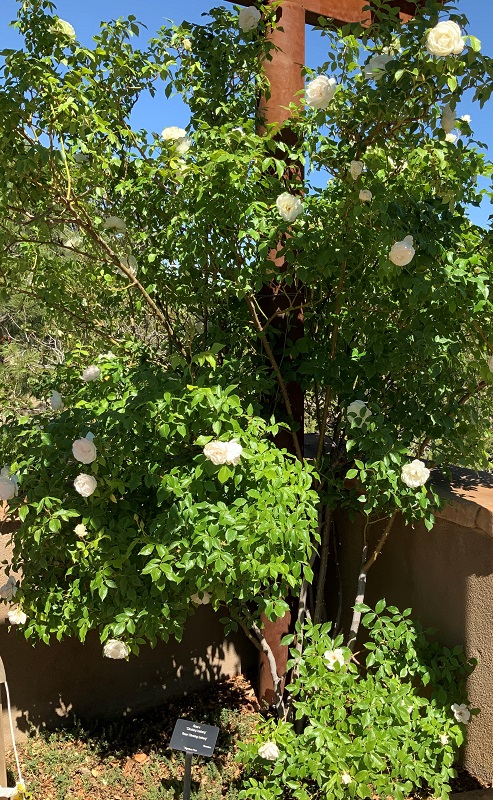
‘Climbing Iceberg’ roses in Botanical Garden.
David Austin (1926-2018), a self-taught horticulturist, spent 6 decades creating more than 200 hybrid roses that combined the fragrances of old roses with repeat flowering of modern hybrid teas and floribundas. He introduced Rosa × ‘Ausmary’ MARY ROSE in 1983 and Rosa × ‘Ausmum’ PAT AUSTIN in 1997. Not surprising for such a popular and profitable plant, current rose breeding is mostly in the hands of large companies, whose workers hand-pollinate tens of thousands of plants each year, resulting in hundreds of thousands of seedlings, of which only a few are marketed after 8-10 years of evaluation.
- Rosa × ‘Ausmary’ MARY ROSE® in Botanical Garden.
Drift® Roses, crosses between standard-sized groundcover (Meidiland®) and miniature roses, were produced by French hybridizers Meilland International and released by Star® Roses and Plants in Pennsylvania; and the JULIA CHILD rose was released by Weeks Roses, which has over 1200 acres of production facilities in the San Joaquin Valley of California.
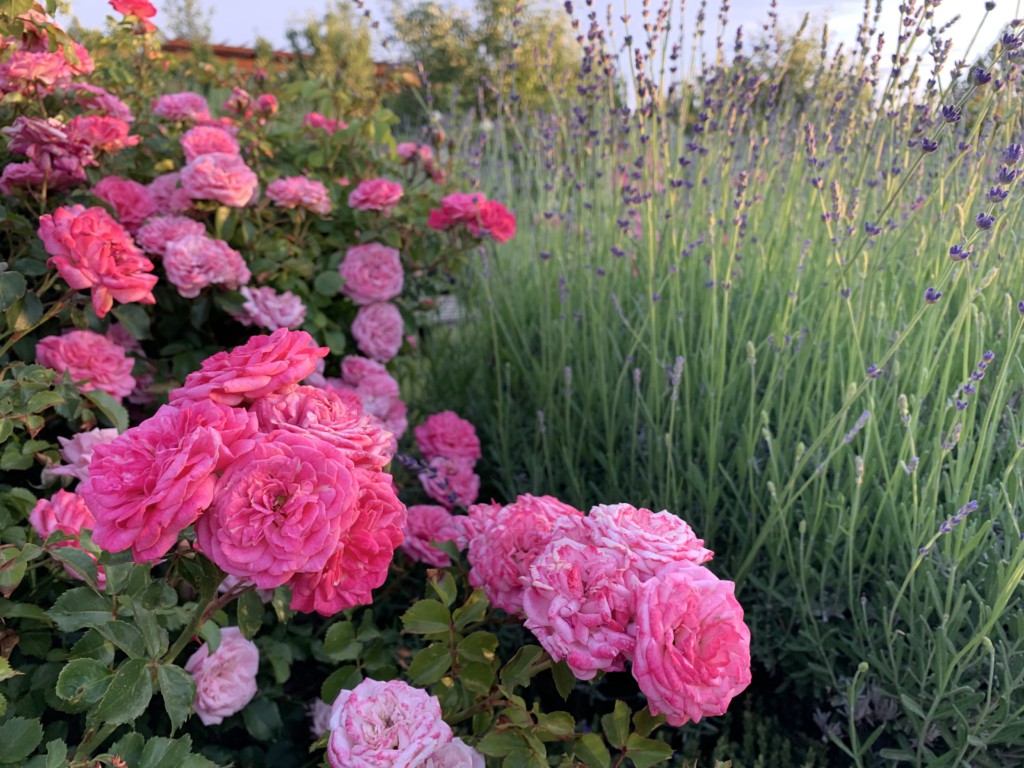
Rosa × ‘Meiswetdom’ SWEET DRIFT
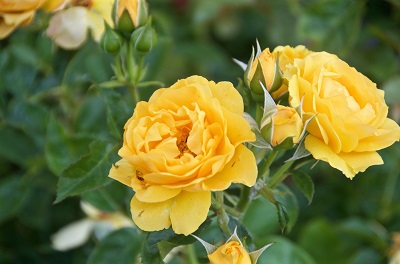
Rosa × ‘WEKvossutono’ JULIA CHILD. Photo by Janice Tucker.
With so many varieties of roses to choose from, it is easy to find many suited to New Mexico gardens!
Take a Self-Guided Virtual Tour
Learn more about our “Roses – Garden Rock Stars!” tour. You can click on a map marker or an item on the tour list to learn more about the roses growing in our Botanical Garden collection.
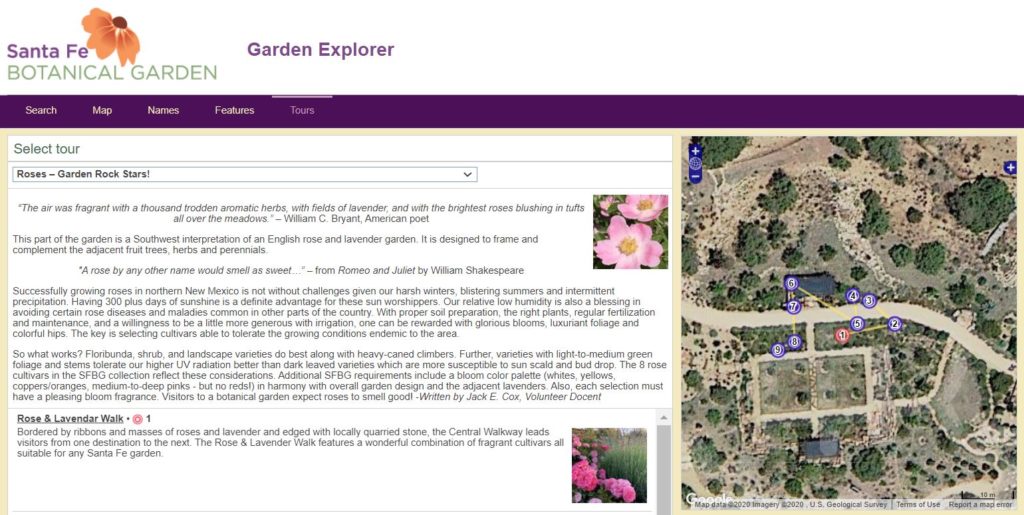
References
Allred, K. W., Ivey, R. D., & Jercinovic, E. M. (2012). Flora neomexicana. Raleigh, NC: Lulu.
Dunmire, W. W. (2005). Gardens of New Spain: How Mediterranean plants and foods changed America. Austin, TX: University of Texas Press.
Harkness, P. (2003). The rose: An illustrated history. Buffalo, NY: Firefly Books.
Potter, J. (2010). The rose. London: Atlantic.

